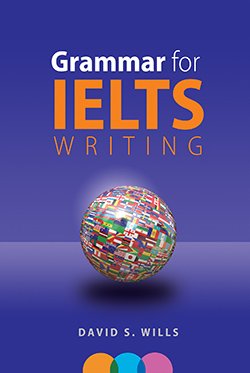3 Common Writing Mistakes to Avoid
Writing is difficult, and even the professionals need editors to hunt down and eliminate those pesky mistakes that litter their articles. However, you can avoid some of the most common writing mistakes by learning a few simple rules. Make your writing stand out and look smarter among your peers by learning how to avoid some of the pitfalls of English grammar and punctuation.
There is no comma before “because”
I know, I know, this sounds crazy, right? You’ve almost certainly read books and articles where the word because is preceded by a comma. And it makes sense because you tend to pause there when you’re speaking.
It is, however, not grammatically correct to place a comma prior to the word “because”. This is because the word is a subordinating conjunction. That means it introduces a subordinate (or dependent) clause. When a subordinate clause comes first in a sentence, it is followed by a comma, but when it comes second there should be no commas splitting the two clauses.
Here’s an example:
• He sold the car because it was old.
• Because it was old, he sold the car.
Now, whether or not it is acceptable to begin a sentence with “because” is another matter… but it is certainly not right to place a comma before “because” when beginning the second clause of a sentence.
Apostrophes never pluralize
Almost every half decent writer knows that apostrophes aren’t used to pluralize a noun. You may have written “I like to read book’s” when you were a child, but by now you know, of course, that this is incorrect.
Amazingly, lots of adults – an indeed, even professional writers! – still think that you can use an apostrophe for this purpose in certain cases. Take for example, decades:
• The 1960’s were a time of intense social change.
What’s wrong with that?!
You should never use an apostrophe to pluralize, even in those weird cases when it just somehow looks right. It’s not 1960’s; it’s 1960s.
Likewise, we need to change this awful error:
• There are five ATM’s on my street. --> There are five ATMs on my street.
Semi-colons aren’t just for winking ;)
Many people think that semi-colons are just for emojis or showing off. In fact, they are not a pretentious grammatical artifact that no one knows how to use. They really do have a purpose, and they really are simple to use.
A semi-colon comes somewhere between a comma and a period in terms of its “power” as a punctuation mark. It is strong enough to hold two independent clauses together, whereas a comma simply couldn’t. Look at this sentence:
• It’s the weekend, I’m taking it easy.
What’s wrong with that? It’s what we call a “comma splice”. In other words, there are two independent clauses separated by a comma.
We can fix this by adding a coordinating conjunction:
• It’s the weekend, so I’m taking it easy.
Or we could use a semi-colon:
• It’s the weekend; I’m taking it easy.
If we really wanted to be formal, we could use a conjunctive adverb as well:
• It’s the weekend; therefore, I’m taking it easy.
But that sounds a bit odd. ;)
Where to learn grammar for IELTS
If you found the above lessons useful, but you still want to learn more about grammar, you can check out this IELTS website with hundreds of helpful guides to all aspects of the English language. You can even get a free book that tells you everything you need to know about grammar for IELTS writing.

Congratulations @dashayu! You received a personal award!
You can view your badges on your Steem Board and compare to others on the Steem Ranking
Vote for @Steemitboard as a witness to get one more award and increased upvotes!